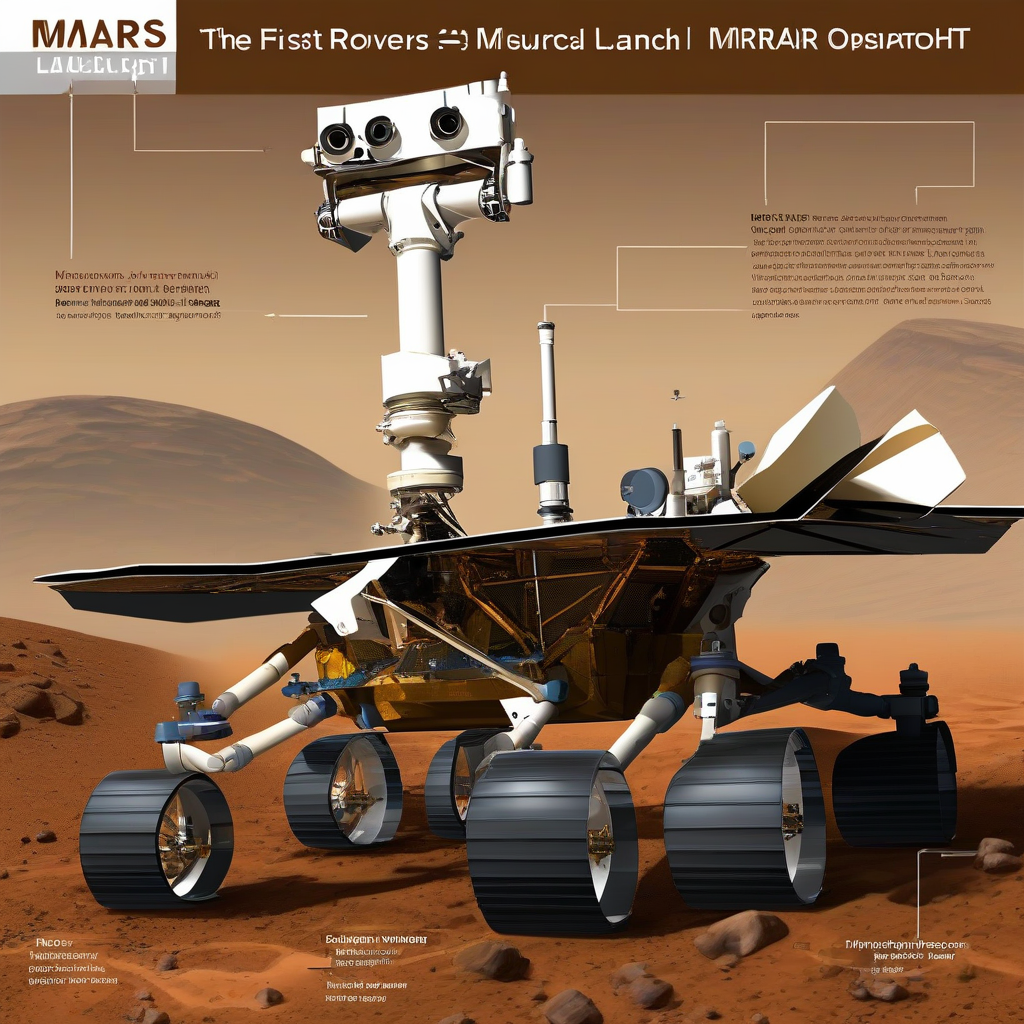
mars probe launch mission overview
Jenis Gambar
Default
Prompt
Mars Exploration Mission: First, launch a Mars probe equipped with high-resolution cameras, spectrometers, and other devices to conduct comprehensive orbital exploration of Mars, map detailed surface maps, analyze the composition of the Martian atmosphere, and provide data support for subsequent missions. Mars Orbiter Operation Mission: The orbiter continuously operates in the Martian orbit, maintaining communication with Earth, real-time transmission of Mars data, and long-term monitoring of Mars, such as monitoring meteorological changes and surface feature changes. Mars Lander Landing Mission: Based on the data provided by the probe, select an appropriate landing site and launch the lander. The lander is equipped with life detection instruments, geological sampling equipment, etc., to softly land on the Martian surface and carry out preliminary ground exploration, such as collecting soil and rock samples, and detecting signs of microbial life. Mars Surface Exploration Mission: Subsequent dispatch of Mars rovers to conduct extensive mobile exploration on the Martian surface, further in-depth research on Mars' geological structure, searching for water resources, and transmitting data back to Earth and the Mars orbiter. Astronaut Survival Support Mission: When the technology is mature, launch a manned spacecraft to send astronauts to Mars. Establish a life support system in the Mars base, including oxygen generation, water recycling, food cultivation, etc., to ensure that astronauts can survive and conduct scientific research on Mars for a long time. Each mission is closely linked, with the previous mission providing necessary information and foundation for the next, forming a complete and orderly mission chain. (III) Timeline Arrangement The plan is to initiate the Mars probe launch mission in 2030. The probe is expected to reach the Martian orbit after a 7-8 month flight and conduct orbital exploration for 2 years. The Mars lander will be launched in 2033, with preliminary ground exploration lasting for 1 year after landing. The Mars rover will be launched in 2035, conducting mobile exploration on the Martian surface for 3-5 years. Around 2040, based on the results of previous missions and technological developments, attempt to launch a manned spacecraft to Mars and gradually establish a Mars scientific research base. The entire timeline considers the current development speed of space technology and the preparation time and execution duration required for related missions, making it reasonable. II. Scientific and Rationality (I) Scientific Basis Mars has a complex geographical environment with various terrains such as mountains, canyons, and plains, a thin atmosphere mainly composed of carbon dioxide. Based on these characteristics, in the design of probes and Mars rovers, walking mechanisms adapted to complex terrains and communication and energy utilization technologies for the carbon dioxide atmosphere environment are adopted. For example, Mars rovers are equipped with special wheels to handle rugged terrain, and probes use solar panels combined with carbon dioxide in the Martian atmosphere for energy conversion to maintain equipment operation. At the same time, according to Mars' climatic conditions, such as cold nights and frequent dust storms, thermal insulation and dustproof measures are designed for landers and the Mars base. These designs are based on Mars scientific research results, ensuring the scientific nature of the plan.
Prompt
火星探测器发射任务:首先发射火星探测器,携带高分辨率摄像头、光谱分析仪等设备,对火星进行全面的轨道探测,绘制火星表面详细地图,分析火星大气成分等,为后续任务提供数据支持。 火星轨道器运行任务:轨道器在火星轨道上持续运行,与地球保持通讯联系,实时传输火星数据,并对火星进行长期监测,如监测火星的气象变化、表面特征变化等。 火星着陆器着陆任务:根据探测器提供的数据,选择合适的着陆点,发射着陆器。着陆器携带生命探测仪器、地质采样设备等,在火星表面软着陆,开展初步的地面探测工作,如采集土壤和岩石样本,检测是否存在微生物等生命迹象。 火星表面探测任务:后续派遣火星车在火星表面进行大范围的移动探测,进一步深入研究火星的地质构造、寻找水源等资源,并将数据回传至地球和火星轨道器。 宇航员生存保障任务:当技术成熟后,发射载人飞船将宇航员送往火星。在火星基地建立生命保障系统,包括氧气生成、水循环利用、食物种植等设施,确保宇航员能够在火星上长期生存并进行科学研究。各项任务之间紧密衔接,前一项任务为后一项任务提供必要的信息和基础,形成完整有序的任务链。 (三)时间线安排 计划在 2030 年启动火星探测器发射任务,预计探测器经过 7 - 8 个月的飞行到达火星轨道,进行为期 2 年的轨道探测。2033 年发射火星着陆器,着陆后进行为期 1 年的初步地面探测。2035 年发射火星车,开展 3 - 5 年的火星表面移动探测。在 2040 年左右,根据前期任务的成果和技术发展情况,尝试发射载人飞船前往火星,并逐步建立火星科学研究基地。整个时间线考虑了当前航天技术的发展速度以及相关任务所需的准备时间和执行时长,具有合理性。 二、科学性与合理性 (一)科学依据 火星的地理环境复杂,有高山、峡谷、平原等多种地形,大气稀薄且主要成分为二氧化碳。基于这些特性,在探测器和火星车的设计上,采用适应复杂地形的行走机构和针对二氧化碳大气环境的通讯及能源利用技术。例如,火星车配备特殊的轮子以应对崎岖地形,探测器利用太阳能电池板结合火星大气中的二氧化碳进行能量转换,以维持设备运行。同时,根据火星的气候条件,如寒冷的夜晚和频繁的沙尘暴,为着陆器和火星基地设计了保暖和防尘措施,这些设计均依据火星科学研究成果,确保方案的科学性。